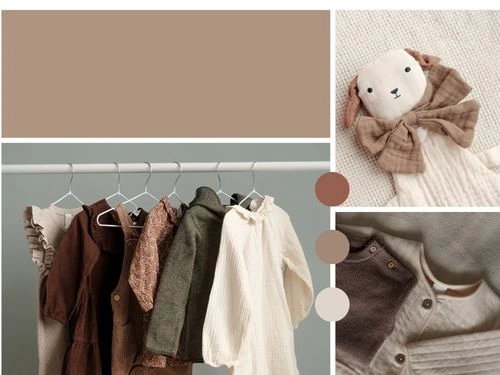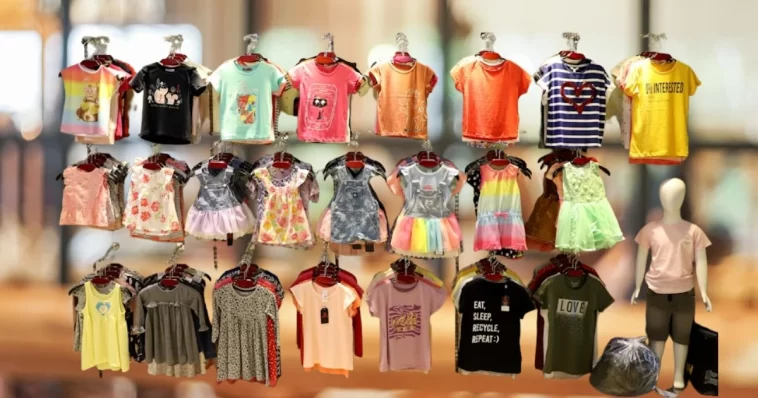Understanding Why Quality Matters
High-quality children’s products are more than just appealing or trendy. They serve a purpose that low-quality alternatives cannot match. Safety is a key factor. Children are naturally curious and often test the limits of what they can handle. Poorly made toys, clothing, or shoes can pose choking hazards, skin irritations, or other risks.
Durability is another major factor. Kids’ clothing and shoes endure heavy use, frequent washing, and rough play. Toys must withstand repeated handling and still function adequately. Investing in high-quality brands means products last longer and maintain their value.

Comfort and practicality are equally important. Well-made clothing allows children to move freely, shoes support growing feet, and backpacks are designed to avoid strain. Choosing brands that prioritize these elements ensures that your child can enjoy the product safely and comfortably.
Finally, ethical and sustainable practices have become crucial. Parents are increasingly seeking to support brands that prioritize environmental care, fair labor practices, and the use of safe materials. High-quality kids’ brands often integrate these principles into their operations.
8 Smart Ways to Spot High-Quality Kids Brands
1. Safety First
Safety should always be the starting point when evaluating any kids’ brand. A high-quality brand consistently prioritizes the use of safe materials, meticulous construction, and age-appropriate design.
- Certified Materials – When shopping for clothing, toys, or accessories, look for certifications like OEKO-TEX, ASTM, or CPSIA. These certifications confirm that products have been tested for harmful chemicals and meet strict safety standards. For example, organic cotton clothing with an OEKO-TEX certification guarantees that the fabric is free from toxic dyes and residues.
- Non-Toxic Components – Buttons, zippers, paints, and other finishes should be non-toxic. Many children put items in their mouths, so non-toxic materials are essential. Brands like Green Toys and PlanToys have earned a reputation for producing safe, non-toxic toys made from recycled or sustainably sourced materials.
- Age-Appropriate Design – High-quality brands design products that are suitable for specific age ranges. This includes the size and shape of toys, the strength of fasteners, and features like rounded edges to prevent injuries. For instance, LEGO produces age-specific sets with different-sized pieces and complexity levels to ensure safety for each age group.
Parents can use safety as a benchmark to quickly identify reputable brands. If a product lacks safety information or warnings, it may be best to avoid it.
2. Durable Construction and Materials
Children are active, adventurous, and occasionally rough with their belongings. High-quality brands account for this by using durable materials and strong construction techniques.
- Clothing That Lasts – Look for garments made with thick cotton, reinforced seams, or quality synthetic blends. Double stitching in seams, strong zippers, and securely attached buttons indicate durability. Brands like Hanna Andersson and Boden are known for producing clothing that withstands repeated wear and frequent washes.
- Shoes Built to Handle Activity – Children’s shoes must support growing feet while enduring daily use. Leather shoes with sturdy soles or sneakers with reinforced stitching are preferable. Check for flexibility, proper arch support, and non-slip soles. Stride Rite, for instance, focuses on durability and foot health in its children’s shoes.
- Toys That Endure Play – Toys should be robust enough to withstand repeated use. Wooden toys, high-quality plastics, and premium fabrics for stuffed animals are often indicators of a durable product. Melissa & Doug is a brand frequently praised for creating long-lasting, educational toys that resist wear and tear.
Investing in durable products reduces the need for constant replacements, saving money and reducing waste.
3. Comfort and Practicality
Children’s comfort should never be overlooked. Even the safest and most durable items are useless if they are uncomfortable or impractical for everyday use.
- Soft Fabrics and Breathable Materials – Natural fabrics, such as cotton, bamboo, and linen, are ideal because they allow the skin to breathe and reduce irritation. These fabrics are also more likely to endure multiple washes without shrinking or losing their shape.
- Ergonomic Design – Shoes, backpacks, and seating products should support proper posture and growth. Adjustable straps, cushioned soles, and lightweight designs demonstrate thoughtful construction. Ergonomic backpacks from brands like Fjällräven or Deuter ensure proper weight distribution and reduce strain on young shoulders.
- Functional Features – Practicality encompasses features such as easy-to-use zippers, elastic waistbands, or machine-washable surfaces. For example, jackets with reversible hoods or convertible sleeves cater to changing weather conditions, allowing for extended use. Practical design reflects a brand’s understanding of real-life parenting needs.
4. Ethical and Sustainable Practices
High-quality kids’ brands are increasingly defined by their ethical and sustainable practices. Parents today want to support companies that prioritize people and the planet.
- Eco-Friendly Materials – Brands that use organic cotton, recycled fabrics, or sustainably sourced wood show a commitment to environmental responsibility. Patagonia, for example, produces durable clothing with recycled materials and encourages long-term use rather than fast fashion.
- Fair Labor Practices – Transparent supply chains and fair wages demonstrate that a brand values its workers as much as its products. Many reputable brands disclose their sourcing practices and factory audits to reassure consumers.
- Minimal Environmental Footprint – Packaging that is recyclable, biodegradable, or reduced in quantity demonstrates environmental awareness. Companies that integrate sustainability into both product and packaging often maintain higher overall standards.
Supporting brands that care about sustainability not only benefits the environment but also teaches children to value responsible consumer choices.
5. Reputation and Reviews
A brand’s reputation often reveals more than marketing claims. Researching reviews, testimonials, and industry recognition can offer valuable insights into a product’s quality and reliability.
- Parent Testimonials – Online reviews from other parents offer honest feedback on durability, comfort, and overall satisfaction. Sites like Amazon, parenting blogs, and social media groups can provide a wealth of real-world information.
- Industry Awards and Recognition – Awards for design, safety, or sustainability indicate a brand’s commitment to excellence. For example, the Good Toy Guide awards are presented to toys that meet high standards in terms of safety, education, and design.
- Longevity and Trust – Established brands with a history of producing reliable products tend to maintain consistent quality. Companies that have been trusted for decades, such as Fisher-Price or OshKosh B’gosh, typically adhere to rigorous safety and production standards.
Reputation is often a quick indicator of a brand’s reliability and overall commitment to quality.
6. Attention to Design and Aesthetics
High-quality kids’ brands understand the importance of design and aesthetics. Thoughtful design goes beyond trendy looks and demonstrates creativity and functionality.
- Timeless Styles – Classic, mix-and-match clothing pieces often indicate careful consideration for longevity and practicality. This allows parents to combine items easily and reduces the need for frequent replacements.
- Detail-Oriented Craftsmanship – Brands that pay attention to embroidery, stitching, or hand-painted patterns often produce higher-quality products. Such details indicate care in production rather than mass-produced shortcuts.
- Appeal to Children and Parents – Products should delight children through colors, textures, and shapes while meeting parents’ standards for practicality, durability, and safety. Brands like Petit Bateau excel at combining classic aesthetics with high-quality materials and functionality.
7. Price vs Value
Price can sometimes be a signal of quality, but it is not always a definitive indicator. Understanding the balance between cost and value is essential.
- Long-Term Investment – High-quality products may cost more upfront but are often more durable and functional. A well-made backpack or pair of shoes that lasts multiple seasons can be more economical than several cheaper alternatives.
- Cost-Per-Use Evaluation – Consider how often a child will use the item. A premium toy that entertains and educates for years offers greater value than inexpensive toys that quickly break.
- Warranty and Customer Support – Brands that offer warranties or responsive customer service indicate confidence in their products. Companies that stand behind their products demonstrate accountability and reliability.
Understanding the difference between price and value helps parents make informed decisions, avoiding low-quality, short-lived products.
8. Innovation and Adaptability
Leading kids’ brands innovate to meet the evolving needs of children and parents.
- Multi-Functional Products – Convertible clothing, adjustable shoes, and versatile toys reflect intelligent design. Brands like 4moms and Stokke create products that grow with the child or adapt to different activities.
- Technology Integration – Some educational toys integrate safe digital features to enhance learning while still prioritizing safety. For example, LeapFrog products combine interactive technology with tactile play for a balanced experience.
- Inclusivity – High-quality brands often offer gender-neutral, adaptive, or culturally diverse options. This reflects awareness of inclusivity and social responsibility. Brands like Cat & Jack emphasize diverse designs and sizing to ensure accessibility for all children.
How to Verify Before Buying
Before making a purchase, parents and caregivers can take several practical steps to verify quality.
- Check Labels and Certifications – Review product labels for material content, safety certifications, and country of manufacture. Certifications are a strong indicator of a brand’s commitment to safety and quality.
- Inspect Product Details – Examine seams, stitching, zippers, and finishes. Physical inspection ensures that items are built to last and free of defects.
- Seek Recommendations – Parenting forums, blogs, and social media groups provide honest opinions and recommendations from people with firsthand experience.
- Read Warranty and Return Policies – High-quality brands often provide clear return or replacement policies. This transparency demonstrates accountability and confidence in their products.
Taking these steps can prevent regretful purchases and reinforce confidence in your choices.
Why Quality Matters Most for Kids
Spotting high-quality kids’ brands involves careful attention to safety, durability, comfort, ethics, and design. These brands invest in materials, thoughtful construction, and responsible practices, ensuring children receive products that are safe, long-lasting, and enjoyable.
Choosing quality over quantity not only protects children but also teaches them the value of responsible consumption. It reduces waste, saves money over time, and supports brands committed to ethical and sustainable production.
High-quality kids’ brands make life easier for parents and caregivers by offering practical, durable, and beautiful products. They also create positive experiences for children through safe, comfortable, and engaging items. By following these guidelines, you can confidently identify brands that deliver value, reliability, and peace of mind.
Investing in quality is more than a financial decision. It is a commitment to your child’s safety, comfort, and long-term well-being.



